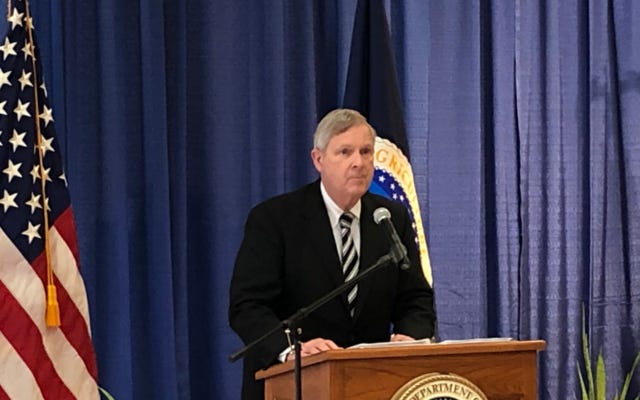The USDA Program to Spur Climate Smart Agriculture Innovation
The USDA Climate Smart Pilot Program (43d) Edition of the Negative Foods Newsletter
I’ve had the privilege of working with the USDA for the past couple of years.
The business community will solve climate change before the federal government, but the government will play an important role (my comments from November 2021). And part of that role includes spurring agricultural climate innovation.
Monday this week the USDA announced a program to invest $1 Billion in “Climate Smart Commodities” pilot projects.
USDA will finance partnerships to support the production and marketing of climate-smart commodities via a set of pilot projects lasting one to five years. Pilots will provide technical and financial assistance to producers who implement climate-smart practices on a voluntary basis on working lands; pilot innovative and cost-effective methods for quantification, monitoring, reporting and verification of greenhouse gas benefits; and market the resulting climate-smart commodities.
Consumer demand is already strong for “climate smart” foods, which command higher prices. Although climate smart practices improve farmer profits, adoption rates are slow because farmers are inherently risk averse. This USDA program will incentivize farmers to adopt regenerative agricultural practices in ways that will create new markets for climate smart products. The creation of these markets will draw in other farmers and create a virtuous cycle among farmers and consumers, accelerating the role of the food system to help reverse climate change.
Secretary Vilsack:
“[Applicants] have to commit to quantifying, monitoring, reporting and verifying greenhouse gas reductions or carbon sequestration results. And they need to work to develop and to promote market opportunities for these climate-smart commodities or forestry products.
The Food and Agriculture Climate Alliance (FACA) commended USDA for advancing a voluntary, incentive-based approach to deploy climate-smart practices on working lands through its Partnership for Climate-Smart Commodities. (Disclosure: I was on a 2021 PMA FACA Working Group in 2021)
Senate Agriculture Committee Chairwoman Debbie Stabenow:
This is about partnering with farmers to tackle the climate crisis. It’s critical that we make sure that climate-friendly practices are profitable and practical for farmers – no matter what crop they produce, what region they’re in, or the size of their operation. The urgency of the climate crisis demands action, and I look forward to reviewing the feedback and data from these pilot projects, which will help inform the writing of the next farm bill.
This is good news. I’m looking forward to the pilot projects. And, importantly, I love that grantees will be required to measure, monitor and verify the climate benefits. We need innovation in measuring regenerative outcomes.
But let’s be clear. This $1 Billion program is de minimus. Remember that the USDA doles out hundreds of billions of dollars annually to subsidize the growing of grains for the benefit of industrial beef, ethanol fuels and ultra-processed foods. The return for taxpayers? Accelerating climate change, higher priced gasoline, and diet-related chronic diseases that kill Americans more than any other cause.
It’s great to see this pilot program get underway, but this is the undercard. The main event is the farm bill, which is passed every five years. The current farm bill results in USDA programs that do more harm than good. I hope this new program is a sneak peak of more serious climate action in the 2023 Farm Bill.
For Your Consideration:
Brief: USDA commits $1bn to ‘climate-smart commodities’
The Field Report: Will the Next Farm Bill Move the Needle on Climate Action?
Zero Acre Farms puts microbes (and $37M) to work on a better alternative to vegetable oil
Patagonia Provisions’ New Fusilli Is Ecofriendly, But How Does It Taste?
No plastic clamshells here: Zero Grocery aims to eliminate unnecessary plastic in grocery delivery
Temasek and BlackRock Launch Decarbonization Investment Partnership
Can we feed a growing planet while cutting agricultural emissions?
THE NEW CALIFORNIA GOLD RUSH INTO ANAEROBIC DIGESTERS
Sixty-eight countries commit to carbon capture, soil protection
The views in this newsletter belong solely to Paul Lightfoot (and not to BrightFarms or other organizations). This newsletter accepts no advertising. Learn more about this newsletter at https://paullightfoot.substack.com/about.

